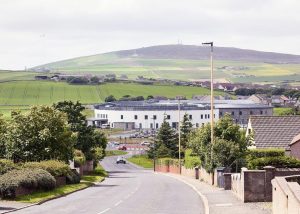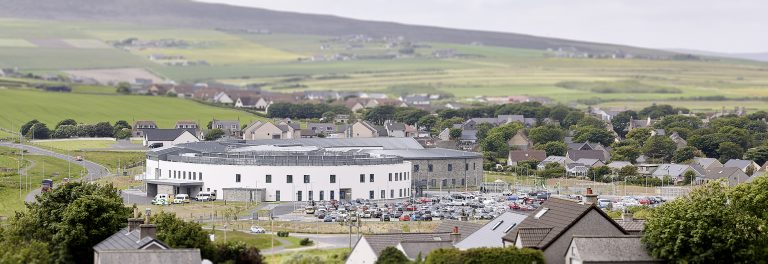With COP26 starting many conversations on how the world can become net-zero, Quadrant Health speaks to the first net-zero hospital about how they are continuing to reduce emissions and maintain sustainability.
Earlier this week, the Health and Social Care Secretary, Sajid Javid, announced all four UK health services are pledging to become net-zero.
With health systems currently accounting for 4.6% of worldwide greenhouse gas emissions, healthcare centres are in desperate need of upgrades in order to reach net-zero targets.
The NHS produces around 50,000 tonnes of waste a year, and its 9,000 vehicles cover more than 127 million, generating a further 60,000 tonnes of greenhouse gas emissions.
As health services around the UK commit to a zero-carbon emission pledge, Quadrant Health speaks to a hospital that opened in 2019, with that aim in mind.

Located in Kirkwall, Scotland, The Balfour Hospital Healthcare Facility is the first NHS Hospital in the UK to be fully net-zero.
Managed by NHS Orkney, the £65 million hospital can currently hold 49 patients and is the first of its kind to consider sustainability as a key priority throughout its design, build and operation process.
The facility is fully electric powered, with electric heat pumps as its prime source of heating. This also allows hot water via air-to-water heat pumps and oil-fired boiler plant providing back-up and easing any operational spikes
This is supported by 1200m2 of photovoltaic cells, which provide a feed-in-tariff benefit and charge the Robertson Facilities Management on island electric vehicles.
A hospital unique in both its structural design and energy efficiency
Simulation models influenced design and decisions, including building form and fabric, passive design strategies such as natural ventilation and daylighting, heat sources and overall energy strategy of the hospital.
The dynamic simulation also led to the curved form of the building to protect the main entrance space and inpatient accommodation from extreme island weather conditions, with a focus on passive design strategy harnessing natural ventilation and daylight.
Sharon Smith, Contract Manager for NHS Orkney told Quadrant Health: “The new Balfour has delivered a fit-for-purpose healthcare facility for the benefit of NHS Orkney’s patients, carers, staff, and the wider community, ensuring the health needs of the population are met within facilities that are efficient, resilient, and sustainable and which allows the delivery of integrated hospital and primary healthcare services.”
The new building, its technology and equipment has been designed to be as flexible and ‘future-proof’ as possible so that the building itself, its systems, NHS Orkney, and its staff can develop and adapt to meet the changing needs of the people and communities of Orkney as these develop.
Other energy-efficient measures within the facility include low energy LED light solutions throughout, with the use of T5 high-frequency low loss fluorescent sources where required for clinical purposes.
The hospital not only maintained but improved its sustainability since its opening
NHS Orkney now runs a fleet of electric vehicles and is developing the green space around the hospital for the benefit of staff and patients, improving local air quality and agriculture.
Food in the hospital is also sourced locally which enables a boost in the local community and reduces emissions of importing other suppliers.
With the predevelopment of the building, Sharon Smith explained: “There were a number of environmental assessments undertaken predevelopment, including Otter Presence Surveys to ensure this protected species was not harmed during the development.”
Planning Conditions put an Archaeological Watching Brief during the site strip to ensure any objects of historical significance were not lost.
She continued: “The use of technology has helped to support and develop telemedicine, remote consultations, and virtual clinics. This has reduced, as far as possible, the need for patients to travel out with Orkney for the majority of routine care, and support communication with and for patients in remote locations to reduce the requirement to travel to the Orkney Mainland.”

